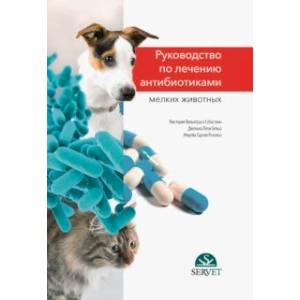Guidelines for the treatment of antibiotics of small animals. Tutorial
Please sign in so that we can notify you about a reply
The book presents data on the mechanism of action and possible undesirable toxic effects on the animal’s body during antibiotic therapy. Antibiotics today represent the largest class of drugs used in medical and veterinary practice. In Russia and foreign countries, various groups of chemotherapeutic agents are currently using and this number of drugs is significantly increasing. Antibiotics combines a number of certain properties: their target receptor located in the microbial cell, variability and activity that are not constant and are reduced over time, due to the formation of resistance to them. The development of antibiotic resistance is inevitable, this process is almost impossible to prevent, antibiotic resistance of microorganisms when using them is a danger not only for the patient, but also for the environment as a whole. This book will be useful for doctors in both medical and veterinary practice.
A textbook is intended for specialists involved in the treatment of small animals with antibiotics. The publication is translated from the Spanish language, its authors are leading scientists of Spain in the field of veterinary pharmacology.
A textbook is recommended by students of specialized colleges of secondary vocational education (SPO), bachelor"s universities in the specialty of "Veterinary Medical Academy"
A textbook is intended for specialists involved in the treatment of small animals with antibiotics. The publication is translated from the Spanish language, its authors are leading scientists of Spain in the field of veterinary pharmacology.
A textbook is recommended by students of specialized colleges of secondary vocational education (SPO), bachelor"s universities in the specialty of "Veterinary Medical Academy"
Category:
- Category:Medical Books
ISBN:
ISBN:978-5-00129-062-9
No reviews found
